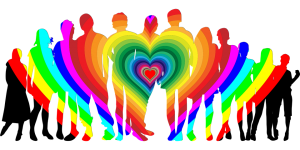 These days, there are increasing individuals who are identifying as somewhere along what is known as a “gender spectrum,” and who may use terms like “non-binary, “gender fluid,” “gender queer” and pronouns like “they/them” or “ze.” What does it all mean? We are here to break it down for you:
These days, there are increasing individuals who are identifying as somewhere along what is known as a “gender spectrum,” and who may use terms like “non-binary, “gender fluid,” “gender queer” and pronouns like “they/them” or “ze.” What does it all mean? We are here to break it down for you:
Historically, a person’s anatomy determined their sex or gender. Having a penis automatically meant being assigned “boy” at birth, and having a vagina meant being assigned “girl.” Exceptions occurred for individuals who may be intersex, meaning having some or all of both genders anatomical organs. As we have learned more, however, we have learned that internal and external factors influence the expression of gender, and that gender may not be as black and white as “boy” versus “girl.”
Gender identity refers to a person’s internal sense of gender. A “cisgender” person has a gender that is consistent with their anatomical structures. A “transgender” person identifies as a different gender than their biology dictates, though not necessarily “male” or “female.” A “non-binary” person identifies as either both, or neither gender, or perhaps a completely different gender altogether. “Gender fluid” can be a synonym for this description. “Agender” means that a person does not identify with gender at all. How a person chooses to present to the world, meaning how they dress, act, engage, etc, is their “gender expression.” As as we have covered previously, a person’s sexual orientation is separate from their gender identity.
Often, if a person’s gender identity is different than their biological assigned sex, they may start to express some of these differences in childhood or adolescence, though many fully “come out’ or express their differences in adulthood. This shift can be jarring for those close to a person, who has been identifying and categorizing this person as “male” or “female” since birth, or earlier. As with most things, change requires open communication. Listening, accepting, and trying to adapt can be the best support that you can give a person as they address their gender differences.
At the end of the day, while it may be confusing and a process of adjustment, a person is still the same person, and that person’s gender is an aspect of a larger, more complex and dynamic individual who has likes, dislikes, dreams, aspirations, and motivations. For more help understanding and adjusting to gender differences, contact us. We can help!
